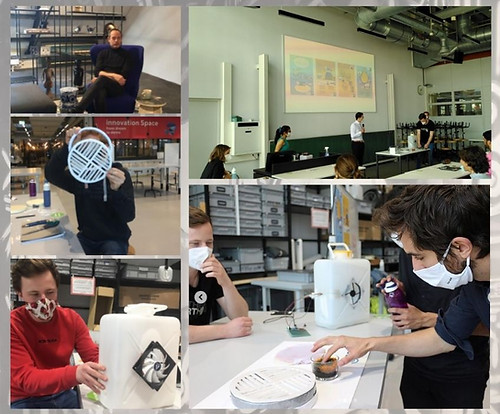
Mobile Medical Clinics
for Africa
Delft Imaging
Carrosserie Akkermans
A PROJECT BY
Diya Samit, Erik Leonardo Visser, Joep Berends, Mart Jonkman
CHALLENGE
Tuberculosis is regrettably often among the leading causes of death in Africa. Delft’s mobile OneStopTB clinics can provide screening – a key method to reduce the spread of TB – to remote locations. However, these clinics are still dependent on the grid (or a diesel generator) given their high energy consumption, especially due to the air conditioning. In this learning line, we were challenged to create a sustainable and self-sufficient clinic, while keeping in mind the thermal comfort of its users.
Maybe 'design'?
OUTCOME
Overall, we have developed four solution concepts that all contribute to the realization of a sustainable, self-sufficient and comfortable OneStopTB clinic: a PV panel awning, a low-tech portable evaporative cooler, a dehumidifying silica gel filter, and battery-specific cooling.
Through these solutions, Delft’s clinics will no longer need to rely on the electricity grid or diesel generators for energy. As a result, fossil fuel consumption is reduced, which is one of the main contributors to the climate crisis. Furthermore, this decoupling will allow the clinics to reach even more distant locations and provide them with screening. Finally, we hope the increased thermal comfort will further incentivize people to make use of Delft’s clinics, despite the stigma sometimes present on TB.
PROCESS
QUARTILE 1
In Q1, we set the stage for our innovations by researching the context in which they will operate. We answered the question “What is the state of healthcare in Nigeria, Eswatini, Ghana and Malawi?” – four countries in which OneStopTB clinics are currently operational. Furthermore, we created a (digital) model to estimate the heat flow into the clinic.


QUARTILE 2
In Q2, we dived deeper into the African climate; we did 12 case studies (spanning all climatic regions) on peak temperatures, humidity and solar irradiance. We started the development of solution concepts by investigating the projected effectiveness of passive cooling methods. In particular, we looked at evaporative cooling and the use of phase-change materials.
QUARTILE 3
In Q3, we revised our solution concepts based on the climatic context, and decided on the four final concepts:
-
A solar awning which extends the solar capacity while providing shade,
-
A portable evaporative cooler built into a jerrycan,
-
A regenerative silica gel filter for dehumidification, and
-
Battery-specific cooling to increase the lifetime of the battery pack
Excluding the battery cooling, each of these concepts resulted in a physical prototype and a poster detailing its implementation.



